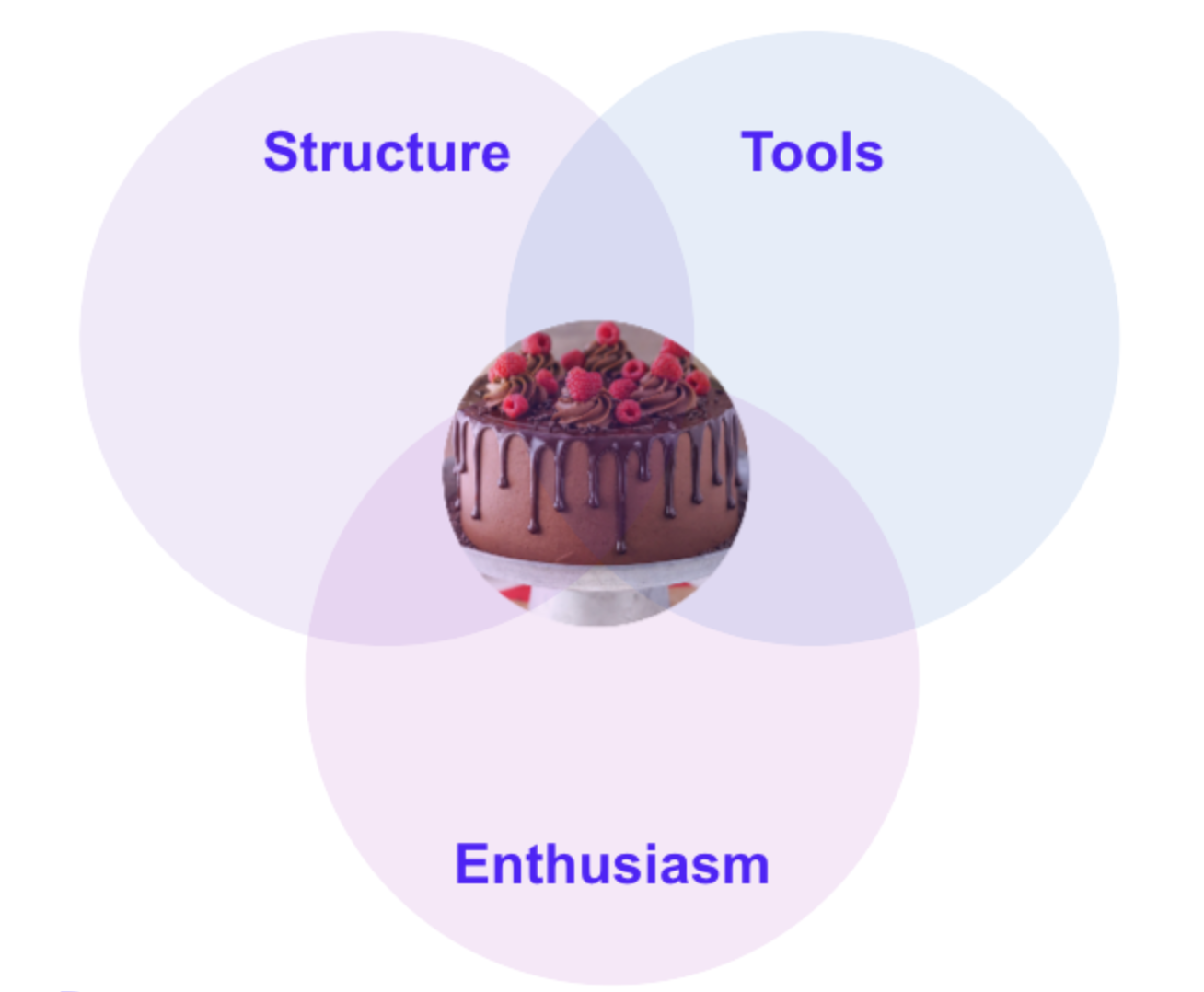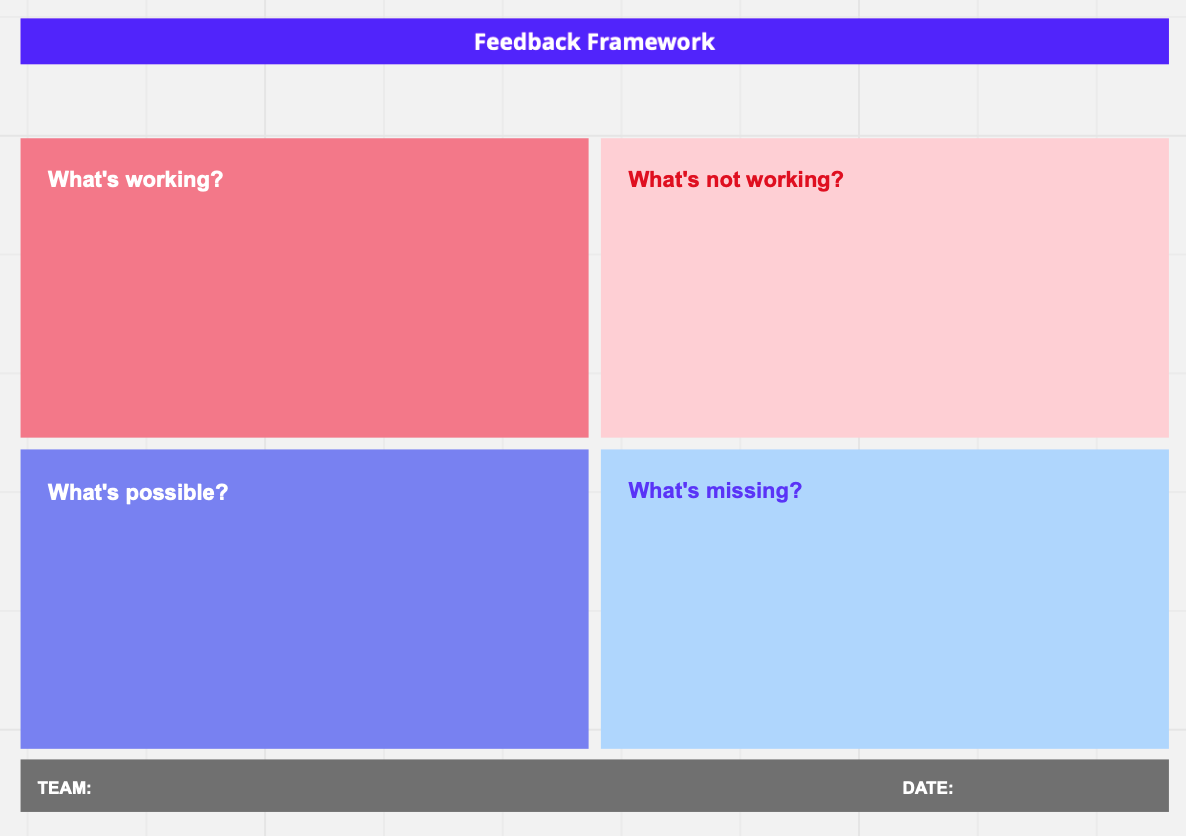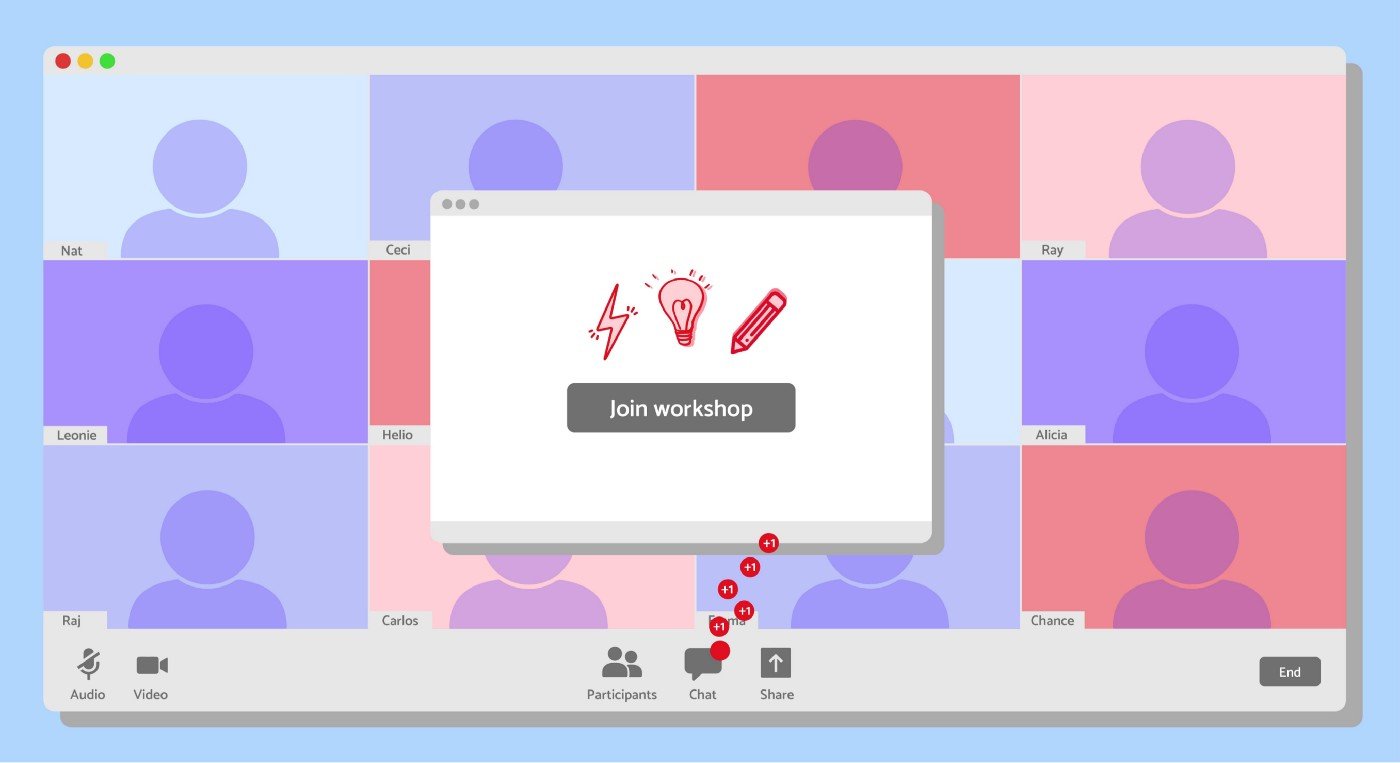So here we all are, it’s 2020 and we’ve all been thrust into a digital transformation whether we like it or not. We’ve all had to rethink how we work, live and play in a world where physicality is strictly limited. For many of us, this has meant changing the way we collaborate, such as shifting from physical workshops that were primarily face-to-face to fully digital ones.
I’m not going to lie, this freaked me out. I have long been a dedicated advocate that workshops MUST be in person and I’d loathe the question, “is there going to be a dial in?” It would take everything in me not to shout “HELL NO!” and, instead, to politely yet forcefully suggest that the workshop simply won’t work if you’re not in the room. Oh, how life has changed...
Once I’d gotten over my melodramatics, I started to open my eyes to the possibilities that remote workshops could bring. This was mainly led by seeing my awesome colleagues rise to the challenge and using all sorts of tools to work around the remoteness. It didn’t take too long after that for me to fully embrace this newfound way of working and now I’m running remote workshops daily and I LOVE IT.
So much so that I decided to do a talk on the basics you need to run awesome remote workshops with my colleague and friend, Leonie Collier, which took place on 2nd July. You can watch the recording here.
The purpose of this blog is to summarise our top tips and to answer some of the questions that we received in the talk, too. Enjoy, and do get in touch and tell us what you think!
Why are remote workshops so great?
I think it’s fair to say that remote workshops get a pretty bad rep. I actually feel bad for remote workshops. Let’s give them a break, ok?
The general criticisms that we often hear are things like:
- It can be hard to keep people engaged
- It can be difficult to build rapport
- It’s tricky to manage as a facilitator
- It can feel less creative.
I’m not saying that these are all true. But I’ve certainly seen some of them happen. In fact, I think I’ve experienced some of these in my own workshops. But, if I’ve learnt anything over the last few months of working from home, it’s that remote workshops can be ever better than the real (face-to-face) deal.
Here’s why:
- Remote workshops are more collaborative and inclusive as you can invite a wider audience, without the usual location and travel barriers
- Being remote can actually increase confidence and give everyone a voice, as you can even use chat functions if people are really uncomfortable speaking up
- If you’re using remote collaboration tools, like Miro and Mural, you have instant traceability and visibility for all of your team, no matter where they are
- There are a tonne of pre-made tools and templates available online which you can use to make preparation and facilitation quicker and easier
- You also instantly have a write-up, because there’s no need to transfer insights from paper or Post-it’s into a digital format
- Finally, and importantly, it’s more environmentally friendly. I’m sorry to break it to you but Post-it’s are not recyclable. Something about the glue.
It’s worth mentioning that remote workshops, and the benefits which they bring, are nothing new. Many practitioners, especially in the Research and Accessibility fields, have been working really hard to improve remote working and workshop techniques for many years. That’s why we have such a wide range of tools and techniques at our disposal, which is something for us to be excited and thankful for.
If this still isn’t enough to convince you, then Leonie and I have a simple framework to share to show just how simple running remote workshops can be!
Running great workshops is like baking a cake
Before you start
You need to know what type of cake you’re baking. Is it a Victoria sponge? A lemon drizzle? A chocolate fudge? Going in without this part clear is a recipe for disaster! At the same time, you need to know why you’re baking a cake. Is it for someone’s birthday? Is it for a charity bake sale? Is it a break-up cake?
(A break-up cake is a real thing by the way, it’s when you bake a cake for someone who's recently had a break-up. I’d suggest going for something chocolatey.)
Knowing the answer to these two questions is key, and the same goes for workshops. You need to know the outcome that you’re trying to achieve before you can do anything else.
Next, the three ingredients for success
After you’re clear on who you’re baking for and what type of cake, there are three key ingredients that you’ll need to make sure that your cake is a showstopper!
These ingredients are: Structure, Tools and Enthusiasm
Let’s start with structure. Unless you’re a GBBO extraordinaire, most of us need a recipe to follow, otherwise we won’t know if our output looks or tastes anything like what it’s meant to.
Next, we need the right tools. I’ve learnt the hard way about what happens when you don’t have the right equipment. Too many of my bakes have turned out flat as a pancake because I didn’t have the right baking tin for the job.
Finally, we have to have enthusiasm. If you hate baking, that’ll show in your cake. You need the energy and enthusiasm of Mary Berry, otherwise you might as well give up before you’ve started.

The same rules apply when it comes to running awesome remote workshops, and even IRL* ones for that matter! Don’t believe us? Keep reading to find out how!
(*IRL is an acronym for ‘In Real Life’ — it’s what all the kids say these days.)
How to run awesome workshops in three simple steps
Now you know what you need to bake the perfect cake, let’s look at how this relates to running remote workshops.
Structure — Plan, Plan, Plan!
The saying goes that “If you fail to plan then you plan to fail” and that is spot on. We’ve seen countless workshops fail because there wasn’t a plan, agenda or activities designed around a specific outcome. A lot of people will set up a meeting and call it a workshop but then during the ‘workshop’, it’s just a load of talking. Remember, if it’s just talking then it’s not a workshop, it’s a meeting.
Structure is important for any workshop but even more so in fully remote settings. When planning what to do in an upcoming workshop, split the time you have into sections with clear outcomes for each. Have no more than one activity at a time. It’s important to clarify why the activity you’ve chosen leads to the desired outcome, and what that means in the bigger picture of what your project is trying to achieve.
For example, let’s imagine you notice a change in the effectiveness of your team but can’t identify the root cause. You could choose to run a workshop where the main outcome is identify the underlying problem — great idea! In the workshop, you might start with an activity aimed at aligning the teams perspective to understand if others feel the same as you do. This would be an opportunity to use a feedback framework like the one below. Once you’re all on the same page, you might run a brainstorming session to help unearth the potential causes. From here, the logical next step would be to collaboratively come up with ideas to solve the problems identified and vote on which to take forward. Here we have one main outcome and three clear activities to get you there.

Lastly, have timings for everything and be generous. It can be tempting to squeeze lots of things into one workshop, especially if you feel that you have lots of time to fill. That’s not true. In remote workshops, you need to build in extra time into everything. It’s important to allow time at the beginning for general chitchat — remember that some of your participants may be living alone so this 5–10 minute social interaction can be enormously meaningful.
You should also prioritise check-in’s, warm-up’s and icebreakers to help you build rapport in your teams (more on this later). All in all, these sessions could take around half an hour before you’ve even started the main part of the workshop — that’s ok! Don’t underestimate the power of a check-in or icebreaker! They are especially useful for remote workshops where you’re less able to “read the room”. These short activities build trust, engage your participants and create a sense of human connection in a digital space.
Here’s an example of a remote workshop structure which you may use:
- Welcome intros — 5-10 minutes. This is when everyone is joining, saying hello, introducing themselves, talking about the weather
- Check-in — 10–15 minutes. A check-in can be verbal or written and is usually based around a question that every participant is invited to answer in a structured way. The question might be general, such as how they’re feeling, or contextual, relating to the project or workshop content. You can introduce structure to the answers you receive by giving clear instructions, like saying “In one or two words/sentence(s), describe...”
- Icebreaker or Warm-up — 10–15 minutes. This is an opportunity to practice the skills required in the main body of your workshop. When it comes to creative thinking and ideation, our brains can often do with a little warming up. Would you ever run a race without warming up? No? Well, the same goes for workshopping. Often, ice breakers can feel a bit random so it’s important to make sure that the ice breaker you choose is directly relevant to the approach and methods you want to see used in the workshop you’re facilitating. There are tonnes online, I’ve linked some below, but don’t be afraid to have fun with it and make ones up!
- Activity — 30–60 minutes. Ok, now you’re into the main body of your workshop. Here you want to explain the activity clearly and concisely, what the expected outcome is, state how long they have to complete the activity and set the timer. This should also include time to playback to the rest of the team and discuss, especially if the activity is being completed in teams or individually. Depending on the time you have, you might repeat steps 3 and 4 for additional activities. Don’t forget to add in breaks if you have a longer workshop with multiple activities. You might not need them, but your participants probably will!
- Check out — 5–10 minutes. Always try to end positively, celebrating what people have collectively achieved and trying to minimise people’s inner critics. You might repeat your check-in questions or do a shorter version to check-out. This will give you a good temperature check for the next workshop, and give people an opportunity to say anything which they haven’t been able to.
This is a very basic example and it’s important that you create a workshop structure that fits the challenge that you’re trying to solve. Sadly, there’ll never be a one-size-fits-all approach when it comes to workshops but this can be a useful baseline to start from.
Tools — Keep it simple!
We know that we need the right tools for the job and with so many online collaboration tools out there, it can be tempting to try the snazziest looking one with all the gizmos and gadgets you could wish for. But, that isn’t always the best choice. Our advice is to always keep it simple. In fact, the simpler the better! Our favourite tools are Zoom — for video conferencing because of its breakout rooms and tools such as polls and reactions — and Miro — for its vast online white-boarding capability, ease of use and the wide range of templates available. There are plenty other great options as well, such as Mural, Whimsical and Google’s JamBoard. Even Microsoft Teams has a whiteboard function (although I must admit, I haven’t used it myself).
A question that we get a lot is what options are there if a team is restricted from using most online tools. This can be tricky, but we do come up against this a lot working with clients who have similar restrictions. In this case, we often look at how we can blend online and offline. For example, you could create templates in PowerPoint and send them to your participants beforehand. They could complete them in the session, and you can still discuss their views as a group, potentially with the facilitator editing a master version on a screen share.
If you’re really struggling with hands-on activities during the workshop then a good alternative is to set homework, before and after your workshop. This is a great tip regardless as it allows everyone to get up to speed and to have had time to think about their position on the problem or opportunity you’re working on. Your workshop might be more of a facilitated discussion, but that’s ok. You can still pepper it with activities that you ask participants to write down on their notepads and then share back, maybe even by holding up their answers to the camera.
If you are using online tools, you need to make sure that everyone you’ve invited has access and knows how to use them. It’s a good idea to send them out a week before to check that people can access them, and you might even schedule a training or 101 session beforehand, too. It can be overwhelming and uncomfortable to be the only person in the room that can’t get the hang of something, so do be mindful of this. It’s so important to create an inclusive and encouraging environment in your remote workshops.
Finally, avoid cognitive overload. This means avoiding asking people to do too many things at once. We are simple creatures, us humans. When you’re asking your participants to do something, keep the instructions simple and ideally singular. If people forget what you asked them, they will quickly shut off and start checking their emails. Then you’ve lost them for good!
Enthusiasm — You set the energy
This is so often overlooked or not considered. We often hear facilitators complain that their participants weren’t engaged enough, or lacked energy. I get it. It’s a facilitator’s nightmare when your participants enter the proverbial room with slumped shoulders and glazed eyes. I’m sorry to tell you that the responsibility to change that is you. But don’t worry, you don’t have to be bouncing off the walls to engage a room. You need to think about your audience and their needs, expectations, hopes and fears, then design your workshop around them. If you have experts in the room that you’re worried will take over, add a section at the beginning which allows everyone to share their thoughts, assumptions or beliefs before you start. As a facilitator, you have the power to choose who speaks. Ask the quieter people to share back first, give everyone two minutes and save the most opinionated person until last.
It’s also best practice to use ice breakers to ease people into the workshop and build trust and rapport. These can be as simple as a check-in, where everyone shares how they’re feeling or something they’re grateful for. Or, you can opt for ice breakers aimed at preparing your participants for the activities you have planned. For example, if you’re running a workshop focused on creating ideas, you might use an ice breaker called “Yes, and…” This helps people to think creatively and get into a building mindset by telling a ridiculous tale where each person has to come up with the next line of the story. It often starts with something like: “The unicorn walked into the office...” These icebreakers may seem silly but they’re so key in remote settings especially, as it’s harder to bounce off each other like we ordinarily would.
We’d actually recommend that you do far more energisers and quick warm ups throughout your remote workshops than you would in a face-to-face setting. This is because most of your participants will be sitting down and that can very quickly lead to lost energy, concentration and motivation. It’s also totally fine to explain this to the room. Level with them. Ask them kindly to work with you and to agree to try things that they normally wouldn’t. It may seem uncomfortable at first but if you can get people on side as early as possible then you’re onto a winner.
Finally, if you want the best chance of engaging your audience, you should do tongue twisters before you start your workshop. Seriously. Tongue twisters will elevate the pitch and musicality of your voice which will make you more engaging and interesting to listen to. The awesome Kat Murray-Clark taught me this and she’s a truly excellent speaker so we should all listen to her. Anyway, we’ve all been on calls where the speaker is so monotonous that our brain eventually only hears white noise and then our name is called, and we realise we haven’t heard a word. Don’t be that speaker. Start practicing your Peter Piper’s pickled peppers and your participants will thank you later.
So, like we said, running remote workshops really is as simple as baking a cake. Hopefully, we’ve convinced you but, just in case, here’s a summary.
To bake the perfect cake and run the perfect workshop, you need:
- Clarity on the outcome you’re trying to achieve
- A clear, pre-planned structure so you know what you’re going to do
- The right tools to do the job well
- Lots of enthusiasm and energy for what you’re doing
- And remember, practice makes perfect!
It’s true that all of these ingredients apply to IRL workshops, too. That’s because they aren’t that different when you really break it down. Having said that, in remote settings there are a few key things that we need to be mindful of and emphasise more than we might do otherwise. Hopefully, this has come across in this blog.
It’s safe to say that I’ve learnt a lot during lockdown and remote collaboration has been one of my favourites. There are certainly going to be some things that I will continue even when we’re back to being face-to-face, such as creating space for everyone to speak (like we do on Zoom), using check-ins to get to know my colleagues better and even using digital tools like Miro in physical workshop settings to capture insights instantly!
And with that, we come to the end of this blog. Thanks so much for reading! We’d love to hear your stories of running your own remote workshops, so do get in touch and feel free to ask any questions. If you want to learn more, we’ve added some resources below to aid you in your remote workshop journey.
Resources
Books
- Visual Doing by Willimein Brand
- Sprint by Jake Knapp
- Service Design Doing by This is Service Design
- The Definitive Guide to Facilitating Remote Workshops by Mural
- The Workshopper Playbook by Jonathan Courtney
Articles
- 10 Exercises to Build Your Creative Confidence
- 5 Exercises That Break Down Barriers
- 10 Activities To Generate Better Ideas
- The Remote Design Sprint Guide
- The Five Levels of Remote Work — and why you’re probably at Level 2
- How to Collaborate Effectively If Your Team Is Remote
Videos
- Getting started with Miro webinar
- How to run a remote workshop with Miro
- Running remote workshops. No fear Miro and Zoom are here
Tools



